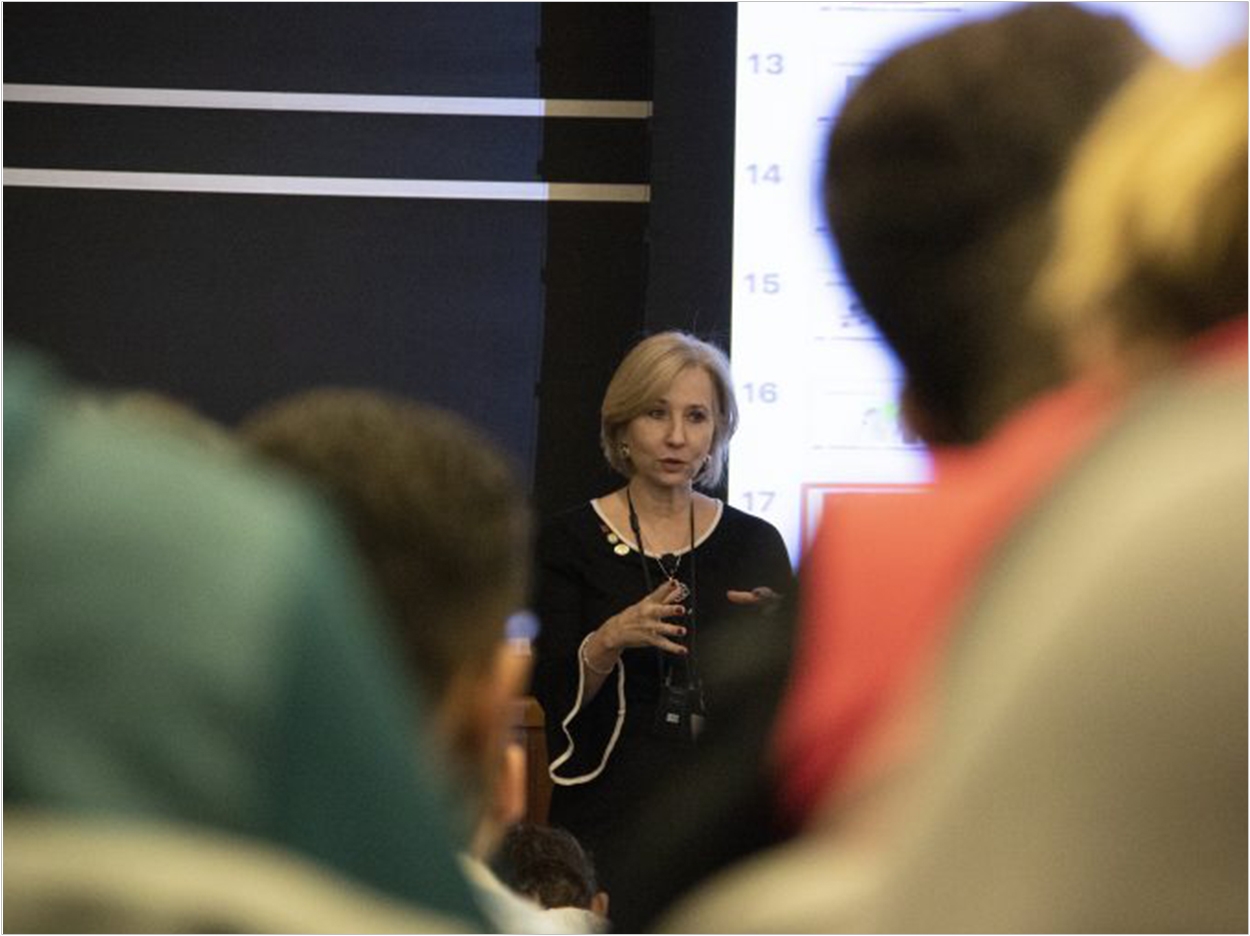
The Boston University Henry M. Goldman School of Dental Medicine (GSDM) hosted the first course on facial injectables for predoctoral dental students in the United States in April and May. Gigi Meinecke, DMD, a member of GSDM’s class of 1988, led the four-day course.
“I never in my wildest dreams thought that I would have an opportunity to teach the facial injectables course at my alma mater,” Meinecke said. “I can’t express the depth of excitement and pride that I feel.
“By choosing to offer this course, GSDM continues to build a reputation as a forward-thinking institution dedicated to using cutting-edge technology to educate the next generation of oral health professionals,” said GSDM dean Jeffrey W. Hutter, DMD, MEd.
Through lectures and hands-on practice, 200 third-year DMD and second-year DMD Advanced Standing students covered embryology, the cranial nerves, skin biology, and the biochemistry of different products used in facial injectables as well as how to handle possible adverse events.
“There’s a lot of basic science associated with the course,” Meinecke said. “I felt that brought a lot to the total understanding and the approach to doing facial injectables.”
Meinecke also performed facial dissections on three cephaluses, enabling students to review cranial anatomy.
“Many of the students haven’t seen a cadaver since two or three years ago, maybe in some cases longer,” Meinecke said. “It’s a really good review.”
During the course’s hands-on portion, students worked with injections themselves, which Meinecke said was not difficult to learn for them.
“Dentists, to be quite honest, are very good at injections. They probably give more injections than any other healthcare practitioner out there,” Meinecke said.
“Because dental students understand the anatomy, once they understand how deep the muscle is, or how superficial it is, or what plane they need to be in,” she added, “the learning curve is not steep.”
Students also learned how to work with Kybella, also known as deoxycholic acid, an injectable for double chin treatment.
“For Kybella, there’s a grid you have to apply so that you know where your dosing is, and where you place your needles,” Meinecke said. Students practiced applying the grid on each other’s necks and chins.
“If you can get a really good grid placement on that area you’re going to inject, the rest of it is extremely easy,” Meinecke said.
Meinecke also praised Hutter for his commitment to bringing new methods of dental education to GSDM.
“This course is a product of the most forward-thinking dean that I’ve ever had exposure to,” she said, noting that Hutter had observed a course she had taught at the Academy of General Dentistry’s annual Scientific Session.
“He said… we really need to talk about having this as part of the curriculum,” she said.
The university approved the course at the end of 2018, and it was held for the first time this spring. The course will be held annually going forward. Meinecke aims to instill a sense of excitement in students about facial injectables.
“I wasn’t there to sell them on this. I was there to deliver all the information and have them come to their own decision as to whether this was something they were interested in,” she said.
“I hope they were able to see my enthusiasm for this,” she added. “I hope they continue to move down the path of facial injectables if they have the excitement that I have for this realm in our field.”
Related Articles
Should You Add Facial Injectables to Your Practice?
The Lower Face Influences Total Aesthetics in Injectable Procedures
Why Lip Injections Look Fake—And How You Can Create Natural Looking Lips



